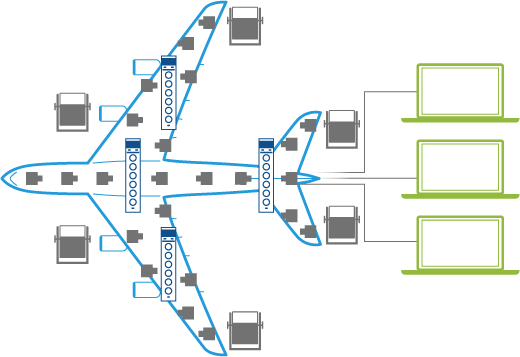
Ground vibration testing (GVT)
In aircraft Ground Vibration Testing (GVT), large modal tests for different aircraft configurations on the ground are performed to update the flutter boundary predictions before the first test flight is made.
Ask an ExpertVirtual simulation has dramatically accelerated the overall aircraft development process. However, physical testing remains a critical contributor to both validation of the simulation models and the understanding of structural characteristics of new materials and manufacturing processes.
Ground Vibration Test (GVT) is used to determine the modal parameters of a complete aircraft and is typically performed very late in the development process. The outcome is used to update the aircraft’s analytical models to predict the flutter boundaries (combinations of altitude and speed) and establish a safe flight envelope before the first test flight. Following the test flights, the analytical models are updated, the final flutter calculations made, and the aircraft obtains its airworthiness certification.
Ground Vibration Test is mandatory for new aircraft and for existing aircraft that undergo modifications. It is also performed on other structures such as helicopters and spacecraft.
System suggestion
A typical GVT system consists of modal exciter systems, modal accelerometers and LAN-XI data acquisition hardware. Measurements and post-processing are carried out with BK Connect® software. The test geometry is defined based on a Finite Element (FE) model of the test object. The FE model also provides the basis for a pre-test analysis to define excitation and response DOFs (Degree-Of-Freedoms), and for investigation of target modes.
This system is scalable, depending on the size of the test object, and especially for larger objects, the LAN-XI data acquisition hardware can be distributed, to minimize cabling.
Video: Watch NASA perform Ground Vibration Testing with BK Connect

当社ニュースレターを購読すると音とバイブレーションの世界からの最新情報を取得できます。









